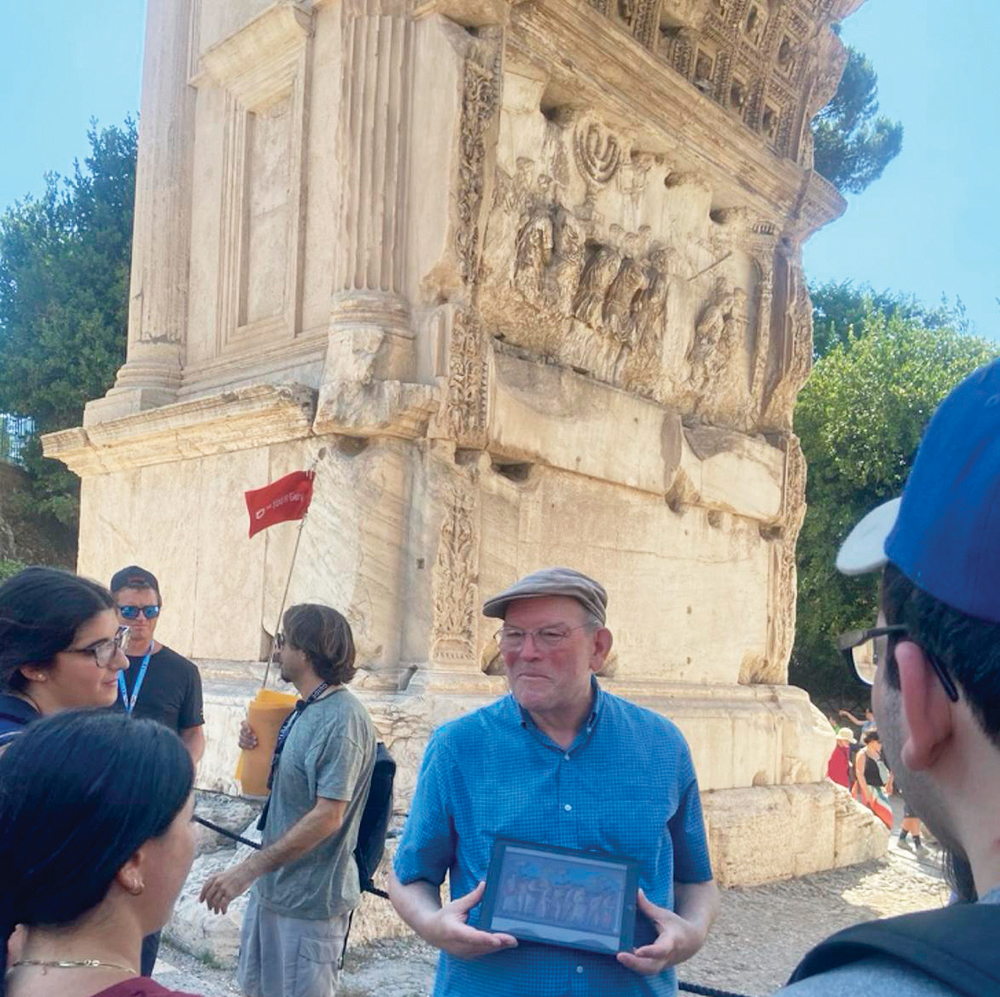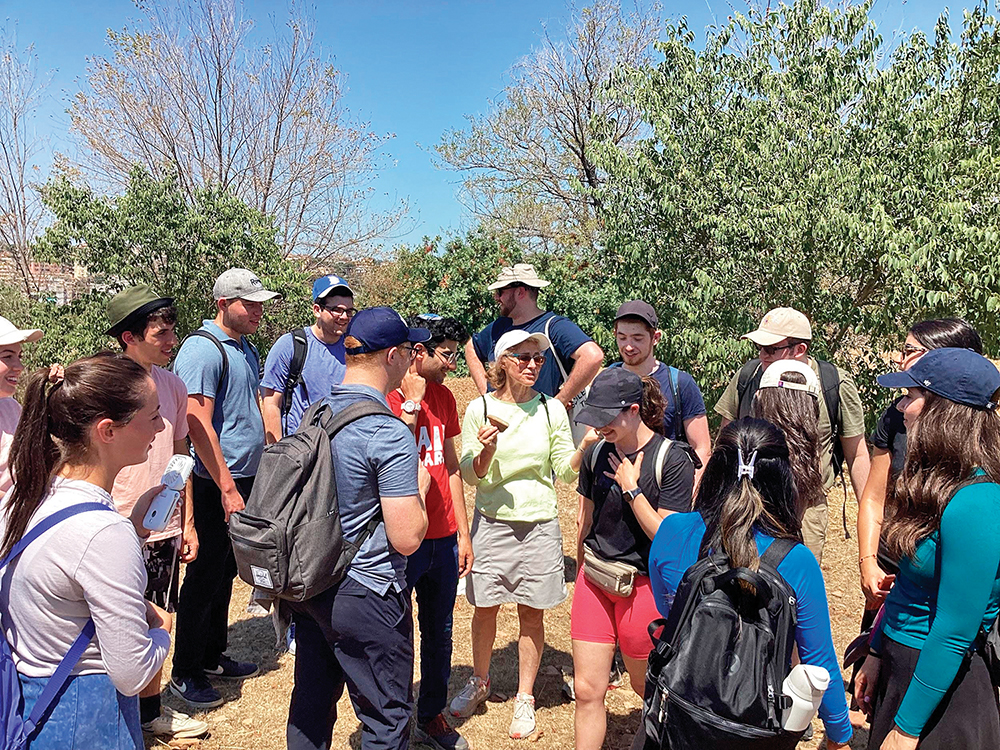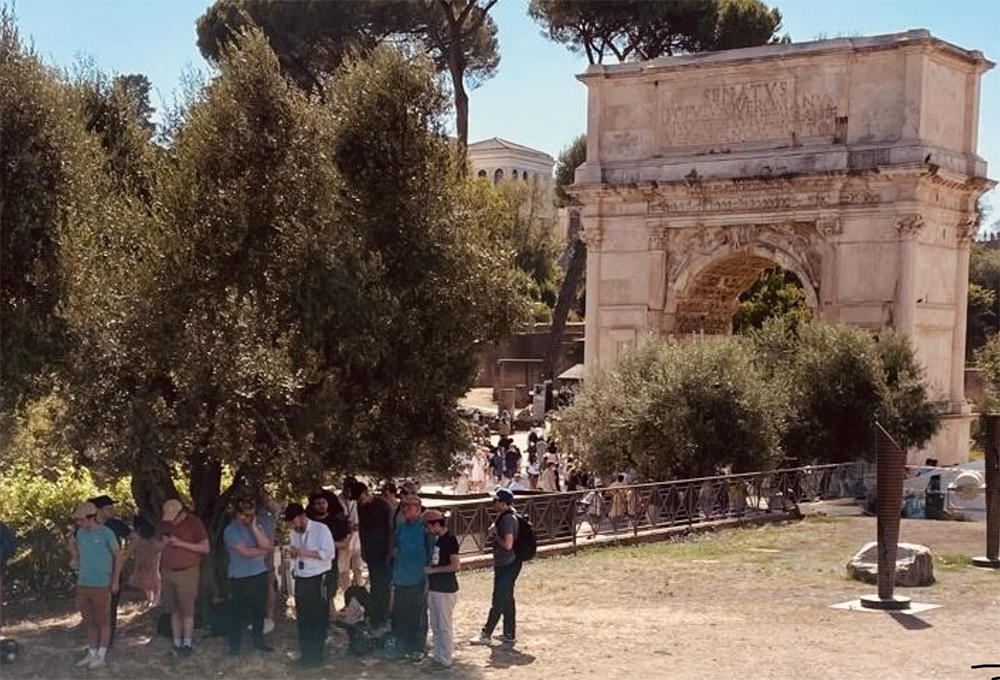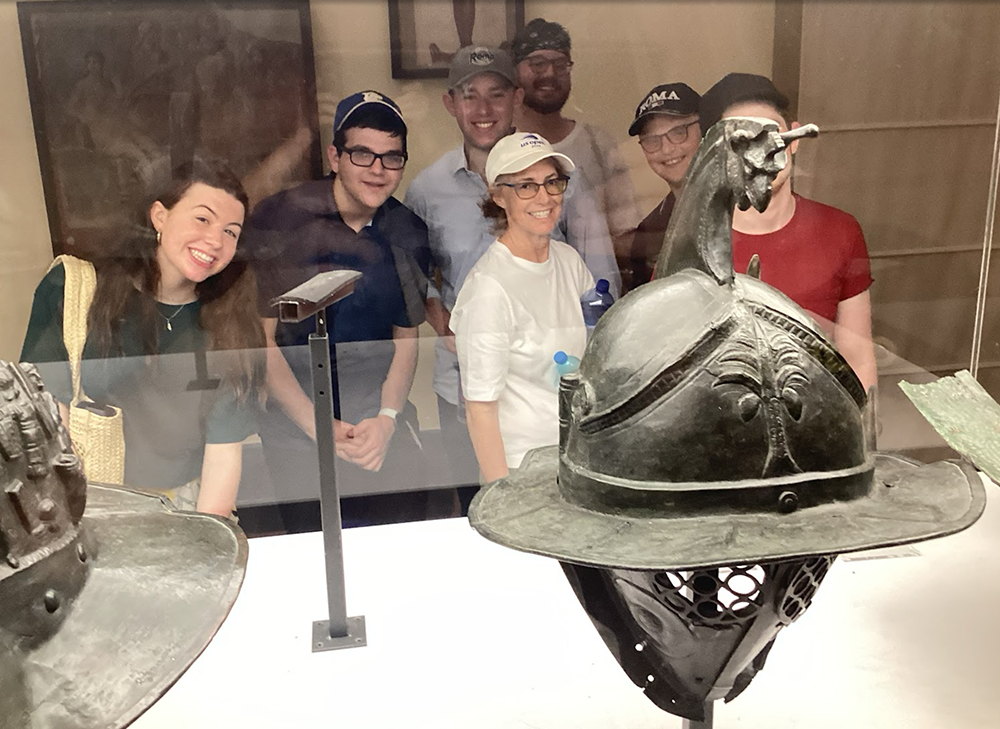
(Courtesy of Yeshiva University Center for Israel Studies) For 13 days in July, Yeshiva University students — men and women — trekked through the glories of ancient Rome, Pompeii and the blue Island of Capri, then flew on eagle’s wings to Israel, all viewed through the eyes of Chazal.
Well, actually through the eyes of archaeology Professor Jill Katz, modern historian Professor Ronnie Perelis and Professor Steven Fine.
“It was an incredible adventure for us all,” said Fine, director of the YU Center for Israel Studies, who brought the ruins of ancient Rome and Jerusalem to life — figuratively carrying the Talmud in his back pocket.

Supported by the YU Center for Israel Studies, the Rabbi Arthur Schneier Program for International Affairs and the Shevet Glaubach Center for Career Strategy and Professional Development, students from Stern College, Yeshiva College and the Bernard Revel Graduate School experienced history in three dimensions: literally under their feet, in their hands and before their eyes.
The camaraderie and good cheer were infectious, said Katz, who scaled with students a unique mound (115 feet tall!) composed of smashed pottery, the remains of millions of jars of olive oil imported to Rome from all over the empire.
“Walking the streets of Rome with this wonderful, diverse and curious group of YU students and my dear colleagues Prof. Steven Fine and Prof. Jill Katz was an intellectually moveable feast,” reflected Perelis, director of the Rabbi Arthur Schneier Program for International Affairs.
Professor Rebecca Cypess, the newly installed Mordecai D. Katz and Dr. Monique C. Katz Dean of Stern College and Yeshiva College, added:

“YU professors model a synthesis of rigorous academic study and classical Jewish tradition, and they help our students connect the dots between Judaism at the time of the Chazal and Judaism as we live and breathe it today. Our students will carry these lessons with them throughout their lives.”
All the students came back with experiences and insights they will carry forward in their lives and studies.
Kayla Frenkel said, “The highlight for me was the Colosseum. Dr. Fine provided a thought-provoking perspective on this iconic structure. Rather than presenting it as merely a marvel of Roman engineering and a place for thrilling shows and games, he emphasized its darker side. The Colosseum was a site of immense violence and brutality, hosting gladiatorial games and public executions that starkly contrasted with Jewish values. Throughout our experience in Rome we looked at history through the eyes of Judaism and of Chazal. Dr. Fine explained that in an effort to counter the excitement of the Colosseum and similar theaters, Chazal needed to enhance the appeal of the shul experience. This historical context transformed my understanding of the Colosseum, highlighting the moral and cultural dilemmas it posed for the Jewish community of ancient Rome.”
According to Justin Winawer, “Here in America, most Jews are either Ashkenazi or Sephardi. Those divisions are as binding as the Torah itself. However, as a history major, I have an interest in how Judaism developed into what it is today. Speaking with professors Perelis, Fine and Revel doctoral student Baruch-Lev Kelman, I learned about Italian Jewry and the ancient Roman prayer tradition, nusach Roma. I was thrilled davening in the Great Synagogue! Before leaving Rome, I bought Siddur Bene Romi, a Roman rite prayer book — a keepsake to remember what I learned and experienced on this trip.”

Ezra Ratner explained, “I found the Jewish Catacombs of Vigna Randanini particularly meaningful. It was amazing to see the beautifully painted walls and ceilings of the crypts, especially the Jewish motifs. The menorah was frequently seen on the walls. To walk through the resting place of thousands of Jews who lived so long ago was incredibly impactful. I felt a sense of awe that the same symbols that represented Judaism so long ago — the menorah, the lulav, the shofar and others — are still symbols familiar to us today. It was an eye-opening experience for me to tour this site with professional historians who gave us a perspective that we would not have reached on our own.”
David Samson recounted that “In the Naples Archaeological Museum, we saw a helmet that belonged to a Roman gladiator. It bore the symbol of a palm tree, which likely identifies the wearer as Jewish. Jewish slaves in Rome wore such helmets to publicize the fact that the Romans had conquered their homeland and taken them into captivity. The choice that this slave had to make must have been a difficult one: kill to stay alive or be killed for disobeying orders. The helmet is just one of the many pieces of physical evidence of the hardships of our forefathers. I believe that this is why our trip was so significant: to fully understand the hardships and persecutions our ancestors endured to ensure the survival of future generations.”
Megan Solomon said, “Pompeii was lost for nearly 1,700 years. Archaeological excavations uncovered a remarkably well-preserved moment in time of Roman life. There we can see the daily life of Romans, from their homes and streets to their public baths, exercise yards and temples. I resonated with Pompeii mostly because it showed me how a city, bustling with life and activity, in a blink of an eye can be destroyed by a tragic event. After a long day in Pompeii filled with insightful conversations with Professors Katz, Fine and my peers, I reflected on how I should never take any opportunity for granted, always strive to show my true colors and demonstrate to the world what I can offer.”

According to Emily Grunstein, “After a long day of traveling from Italy and a good night’s sleep, our first touring stop in Israel was Ein Gedi. The day began at the beautiful kibbutz of Ein Gedi where we learned about the foreign trees and got to see the ancient synagogue. As the day went on, the temperature rose and suddenly we were standing in the direct sun of 101 F. Thankfully, the day continued into the springs of Ein Gedi with only a short hike to get there. After weathering the heat of Italy every day of the trip, Ein Gedi was not only refreshing physically but spiritually too.The entire class (professors included) was unable to resist dunking into the springs and lying in the cold water to cool down.”
The YU Center for Israel Studies stands with the state of Israel — in all of its amazing complexity — at this moment of crisis and pain, of loss and true courage.
Visit yu.edu/cis.









